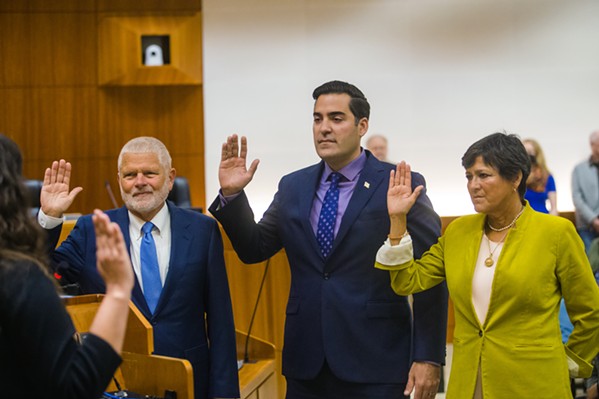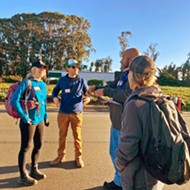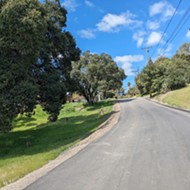[{
"name": "Newsletter Promo",
"id": "NewsletterPromo",
"class": "inlineCenter",
"insertPoint": "4",
"component": "15264767",
"requiredCountToDisplay": "0"
},{
"name": "Ad - Medium Rectangle CC01 - 300x250",
"id": "AdMediumRectangleCC01300x250",
"class": "inlineCenter",
"insertPoint": "8",
"component": "2963441",
"requiredCountToDisplay": "12"
},{
"name": "Ad - Medium Rectangle LC01 - 300x250",
"id": "AdMediumRectangleCC01300x250",
"class": "inlineCenter",
"insertPoint": "18",
"component": "2963441",
"requiredCountToDisplay": "22"
},{
"name": "Ad - Medium Rectangle LC09 - 300x250",
"id": "AdMediumRectangleLC09300x250",
"class": "inlineCenter",
"insertPoint": "28",
"component": "3252660",
"requiredCountToDisplay": "32"
}]
The San Luis Obispo County Board of Supervisors was divided as it tried to iron out the framework for an independent redistricting commission to scrutinize and readjust county district boundaries in 2031.
Fourth District Supervisor Jimmy Paulding wanted voters to decide through a ballot measure, adding that it's a way to remove "an abuse of power."
"We all know what happened in the last redistricting cycle," he said at the Jan. 16 special meeting. "It is my personal view that ... it was intended to favor a political party."
Paulding is referring to the controversial Patten map—first drawn by county resident Richard Patten and adopted in December 2021 by the previous Board of Supervisors.
Voter registration data showed that the Patten map gave the Republican Party wider advantage by dividing more Democrats into two districts and Republicans into three districts. Minutes after 1st District Supervisor John Peschong, Paulding's predecessor Lynn Compton, and 5th District Supervisor Debbie Arnold greenlit the map, the SLO County Citizens for Good Government said it intended to sue the county. Alleging gerrymandering, the League of Women Voters of SLO County joined the lawsuit to overturn the map. Last year, the new Board of Supervisors settled litigation with the two groups, threw the Patten map out, and opted for a map with similar boundaries to the one adopted in 2011.
At the Jan. 16 meeting, supervisors debated between seeking state legislation that could create an independent redistricting commission or placing a local ordinance before voters. While 2nd District Supervisor Bruce Gibson said he's "less committed to one path or another," he ultimately favored pursuing legislation.
"If the Legislature is proceeding to create a blanket action for counties of a certain size that seems likely to include us, maybe we should be out there with what we want first, as a means of getting something that is best crafted to this county," he said.
Gibson mentioned that though he respected the will of the voters, he hasn't heard pushback about creating a redistricting commission from anyone except for Peschong and Arnold. The handful of community members who spoke during the public comment period—including representatives from the citizen groups that sued the county—also expressed support for setting up the commission.
County Counsel Rita Neal told New Times that state Sen. John Laird's (D-Santa Cruz) office contacted the county to see if the supervisors were interested in seeking state legislation to create an independent redistricting commission. Currently, Los Angeles, Riverside, San Diego, Fresno, Orange, Kern, and Sacramento counties have commissions set up that way.
In a 3-2 vote with Peschong and Arnold dissenting, the board opted for the legislative route. The county now needs to submit a "spot bill" to Laird's office by Feb. 16.
"Essentially, that is just a holding place indicating we are seeking legislation for an independent redistricting commission for San Luis Obispo County," Neal told New Times via email. "From there, we will work with the senator's office and assist in drafting legislation, which will go through several layers of review in Sacramento, including a review by legislative counsel to assure legal sufficiency."
By choosing this route, supervisors sidestepped the cost associated with presenting an ordinance to voters in November, saving $51,000 in estimated county funds needed to put it on the ballot. A ballot measure would have also required that any future changes to the ordinance would need to go before voters—something supervisors wanted to avoid.
The board picked elements from the draft ordinance prepared by county staff and requested that Laird's office include it in the legislation. This includes requiring SLO County's redistricting commission to comprise 11 members drawn from a candidate pool of nine people from each of the five supervisorial districts; requiring the commission to conduct five public meetings including a workshop before drawing maps for the 2031 redistricting cycle, and three public hearings after maps are sketched; and requiring the commission to detail why it chose the final district boundaries within 21 days of adopting them.
Neither Peschong nor Arnold supported forming a commission.
Peschong leaned on the issue of rising costs to reject it, adding that the county is facing a $28 million deficit. The county anticipates the 2030 redistricting process to cost from $750,000 to $1 million.
"In 2030 dollars, it'll get around to $4 million to $5 million to get this done," he said.
Arnold said the redistricting commission takes away a duty the Board of Supervisors has always performed with the help of county staff.
"I am very disappointed," she said at the meeting. "I don't think the Legislature necessarily always represents the people of San Luis Obispo County. If you have run a campaign at the county level, then you know your people ... and your boundaries. You can't duplicate that with the Legislature in Sacramento." Δ
Latest in News
Comments
Showing 1-1 of 1
Readers also liked…
-

Coast Unified teachers upset over new position's salary and qualifications
Oct 20, 2022 -

SLO police identify alleged driver who hit and killed couple
Dec 22, 2022 -

When the levee breaks: Oceano residents, county officials walk a tightrope of regulations to manage Arroyo Grande Creek, which some say led to the levee's failure in January
May 18, 2023










